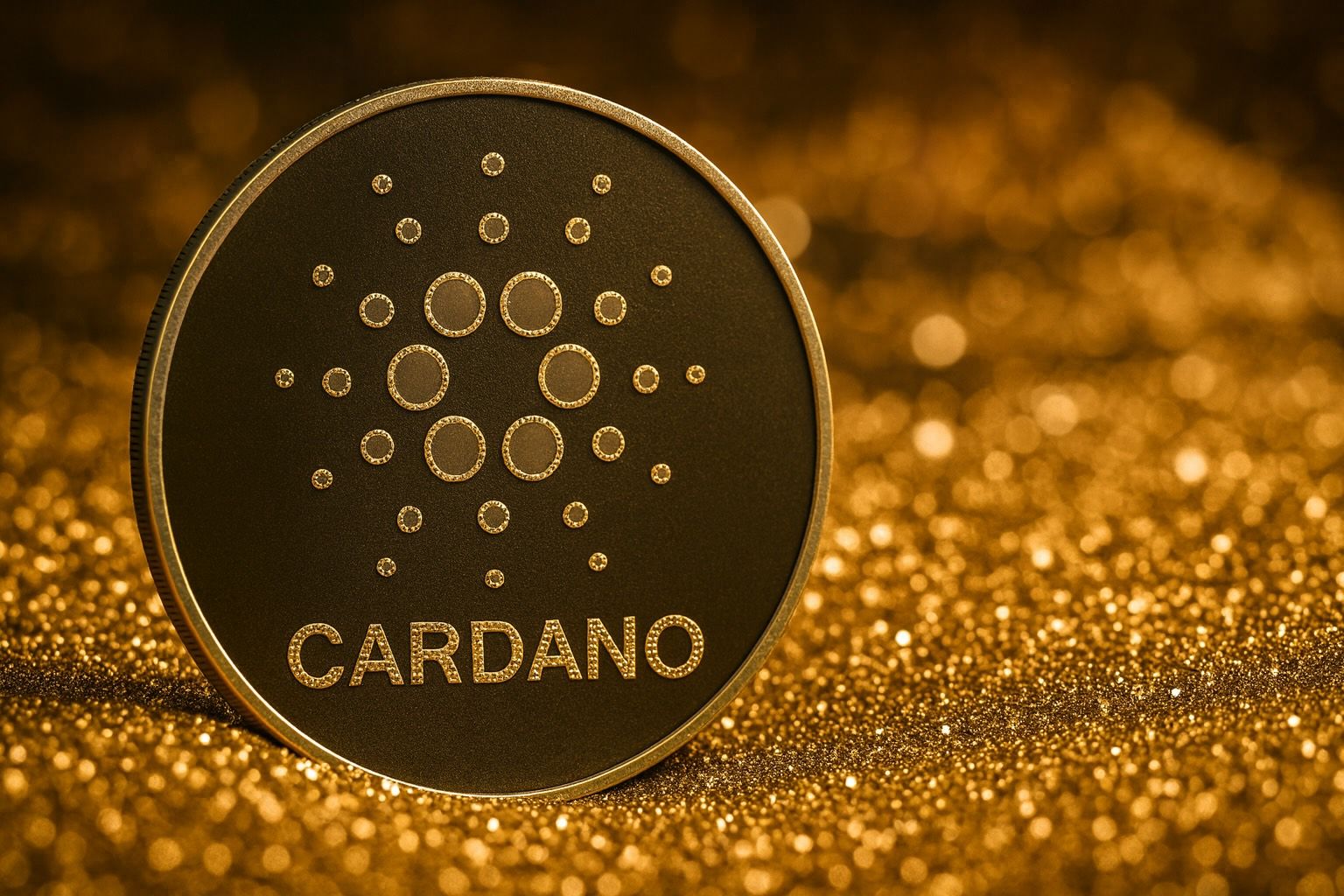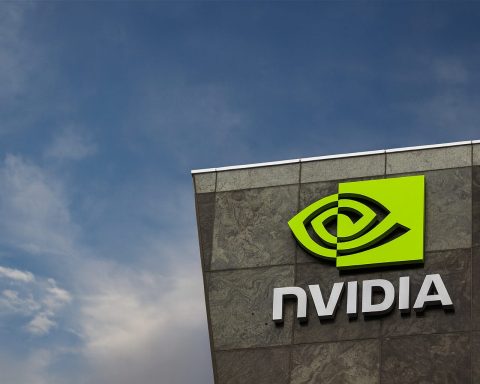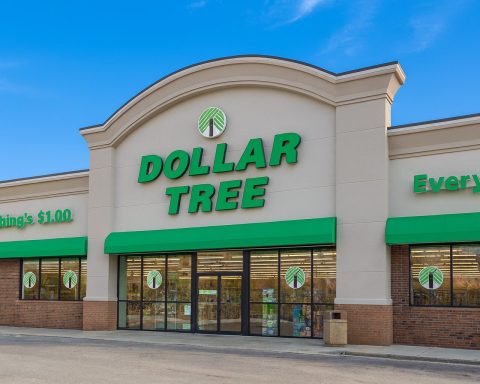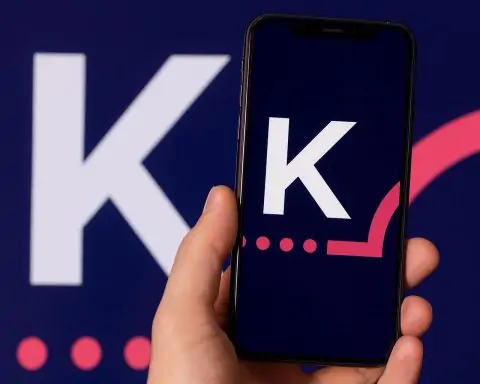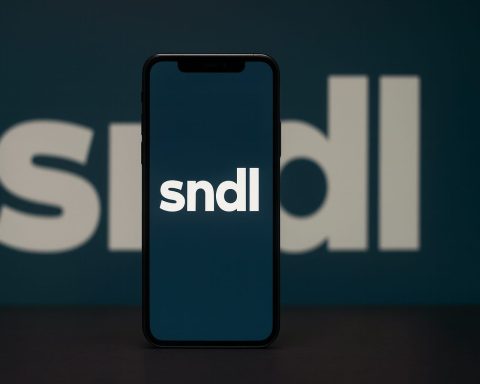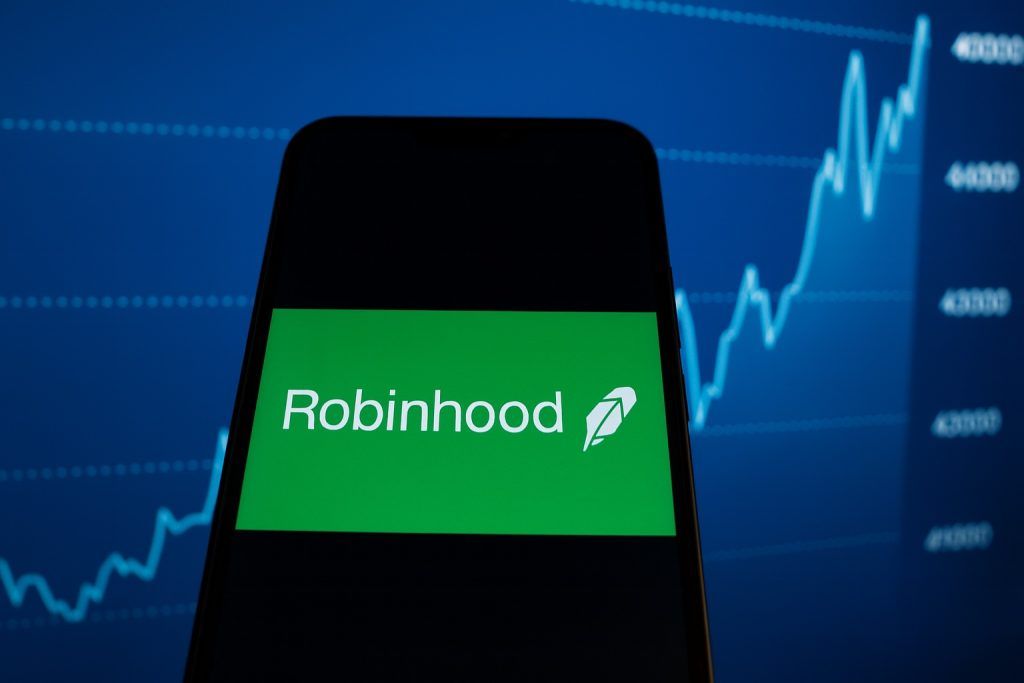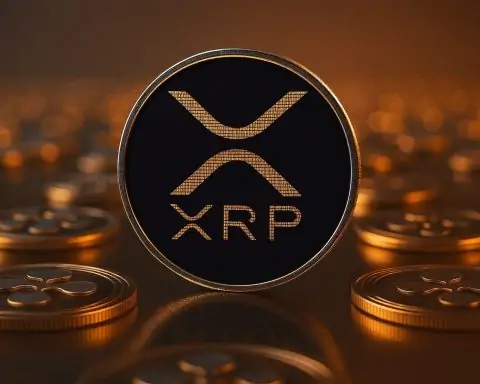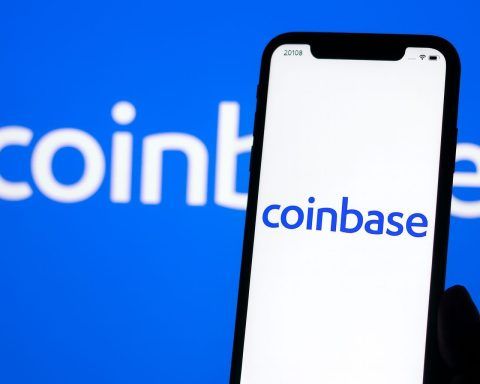Key Facts (as of October 10, 2025)
- Current Price & Market Cap: Cardano’s ADA token is trading around the mid-$0.80s, roughly $0.84 per coin, giving it a market capitalization near $30 billion [1]. ADA briefly approached $0.87 this week but has since pulled back toward $0.80 support amid a broader crypto market dip [2] [3]. Daily trading volumes fluctuate around $1 billion+, reflecting solid liquidity [4].
- Recent Price Movements: After an early-October rally, ADA failed to decisively break $0.90 resistance and remains range-bound. It is consolidating in a symmetrical triangle pattern with support near $0.80 and resistance around $0.84–$0.90 [5] [6]. Traders view $0.84 as a pivot – a breakout above this zone could target the $0.90–$1.00 region, whereas a drop below $0.79 may open downside toward the mid-$0.70s [7] [8].
- Technical Indicators: Cardano’s short-term technical signals are mixed. The 20-day and 50-day EMAs are converging around $0.82–$0.83, creating a tight pivot zone [9]. The Relative Strength Index (RSI) sits in the mid-40s (near neutral) [10], and MACD momentum is modest. Bullish sign: RSI and other oscillators have started ticking up, and on-chain staking activity remains robust, indicating a committed holder base [11] [12]. Bearish sign: ADA is still below its 30-day moving average (~$0.85) [13] and far below its 2021 all-time high (~$3, over 80% down), showing longer-term trend weakness.
- Catalysts & News: Major upgrades and partnerships are bolstering Cardano’s fundamentals. The long-anticipated Hydra scaling solution (Layer-2) launched its v1.0 node, demonstrating over 1 million transactions per second in testing [14] – a potential game-changer for Cardano’s throughput. The Voltaire era of on-chain governance kicked off with the Chang and Plomin hard forks, giving ADA holders voting rights in protocol decisions [15]. Cardano also partnered with NEAR Protocol to enable bridgeless cross-chain swaps across 20+ blockchains via “Intents” – a move founder Charles Hoskinson praised as “the future of crypto,” calling the NEAR team “great” [16]. Additionally, ADA was added to the S&P Digital Markets Index in October, boosting its institutional visibility [17], and Coinbase expanded ADA staking services, signaling growing mainstream support.
- Ecosystem Growth: The Cardano network hosts a flourishing ecosystem of over 17,000 Plutus smart contractsdeployed to date [18]. Recent network upgrades (code-named Project Acropolis) helped push on-chain activity to an estimated 2.6 million transactions per day on average [19], showcasing increased usage. However, Cardano’s DeFi adoption remains modest – its decentralized app (dApp) ecosystem and total value locked still lag far behind competitors like Ethereum and Solana [20]. The Cardano Foundation reports 2,000+ projects building on Cardano and ~1.34 million wallets delegating ADA in staking [21]. New initiatives like the Midnight privacy sidechain (launched in testnet, even attracting millions of cross-chain users) and a recent LayerZero integration (connecting Cardano’s UTxO blockchain with 145+ other networks via the Apex Fusion project) highlight the expanding use cases and interoperability of the Cardano ecosystem [22] [23].
- Regulatory Outlook: Regulatory developments are creating both uncertainty and optimism. The U.S. SEC has postponed its decision on Grayscale’s proposed Cardano Spot ETF to October 26, 2025, leaving traders anxious [24]. Prediction markets peg the odds of approval around 75–87% [25] [26] – a favorable sign. In parallel, REX Osprey filed for a Cardano Staking ETF, enabled by recent SEC rules clarifying that proof-of-stake staking is not a securities transaction [27]. Bloomberg analysts and crypto legal experts largely view altcoin ETFs as “virtually inevitable” under the new framework [28] [29]. A green light from regulators could spark significant institutional inflows into ADA, while any rejection or delay might temporarily dent prices (analysts warn of a 10–15% downside if the ETF is denied) [30] [31].
- Market Sentiment & Comparisons: Sentiment around ADA is cautiously optimistic. Blockchain “whales” accumulated roughly 70 million ADA (∼$60 million worth) around the $0.85 level in recent weeks [32] [33], signaling confidence in Cardano’s long-term value. At the same time, ADA’s price struggles to decisively turn bullish – it’s trading in the same general range as a year ago, even as Bitcoin has rallied, reflecting some rotation of capital from altcoins to Bitcoin lately [34]. Cardano’s market cap (~$28–30B) ranks it around the #10–#11 spot among cryptocurrencies, well below giants like Ethereum (>$200B) but ahead of most other smart contract platforms. Institutional sentiment is growing: Cardano’s inclusion in an S&P crypto index and potential ETF approval could put ADA on a more level playing field with top competitors in traditional markets. However, skeptics remain; for instance, Bitcoin veteran Adam Back has argued he has “not noticed anything of value” from Cardano’s research, reflecting lingering criticism of its slower, academic approach [35]. Overall, ADA is viewed as a high-potential, high-risk asset: its research-driven roadmap and strong community give it competitive advantages, but it must still prove it can catch up to Ethereum’s network effects and Solana’s speed in areas like DeFi.
- Forecasts – Short Term & Long Term: Price predictions for ADA vary widely. In the short term, many analysts see $0.84–$0.90 as the make-or-break zone. A confirmed breakout above $0.90 (with volume) could trigger a sharp rally – possibly even a short squeeze given over $100 million in short positions that would liquidate above ~$0.99 [36]. Bulls argue this could accelerate ADA toward $1.50–$2.00 in an extreme squeeze scenario [37] [38]. Conversely, if ADA fails to hold the $0.80 support, bears may target the $0.75–$0.76 level next [39]. Looking further out, year-end 2025 targets range from about $0.60 up to $1.50+. For example, a Benzinga survey pegs a conservative 2025 close around $0.93 (with ~$0.84 as a bearish case, $1.04 bullish) [40], whereas more optimistic forecasters like InvestingHaven and Cryptoninjas think ADA could average ~$1.20 in 2025 or even reach the $1.40–$1.70 zone by December [41] [42]. Longer-term projections see multi-dollar ADA if Cardano fulfills its vision – commonly $5+ by 2030 if significant adoption occurs [43]. (Some outliers even speculate on two-digit prices by 2050 [44], but such estimates are highly speculative.) In summary, analysts agree Cardano has substantial upside potential if its technology and community continue to deliver, but near-term price action will depend on breaking resistance and broader market conditions heading into 2026.
Cardano’s Price and Market Performance (October 2025)
Cardano’s ADA is hovering around $0.80–$0.85 as of October 10, 2025, reflecting a period of consolidation after a volatile start to the month. Earlier in the week, ADA showed signs of a breakout, climbing toward $0.87 on optimism around new developments [45]. However, the coin faced stiff resistance near the $0.90 threshold and has since retreated to the lower-$0.80s [46]. This leaves ADA roughly flat to down over the past 7 days, underperforming a Bitcoin-led market rally (Bitcoin dominance has surged above 58%, siphoning some capital from altcoins) [47].
In terms of market capitalization, Cardano remains a top-tier crypto asset. At ~$0.80–$0.85 per coin, ADA’s market cap is about $28–$30 billion [48], placing it around 10th–11th largest cryptocurrency globally. For context, that is about one-eighth of Ethereum’s market cap, highlighting that while Cardano is significant, it still trails the two market leaders (Bitcoin and Ethereum) by a wide margin in valuation. Trading volumes for ADA have averaged in the hundreds of millions to over $1 billion per day in early October [49], indicating healthy liquidity. Notably, 24-hour volume has occasionally spiked above $2 billion during market moves, showing traders are actively positioning ahead of major events (like the upcoming ETF decision).
ADA’s price trajectory in 2025 has been choppy. Year-to-date, Cardano’s market cap is actually down about 13% [50], and the token is still over 80% below its September 2021 all-time high (roughly $3.10). This underscores that, despite recent rallies, Cardano is still in a recovery phase from the 2022 bear market. On a positive note, large ADA holders (whales) appear to be buying the dips: roughly 70 million ADA were accumulated by whale wallets around the $0.85 level in late September [51] [52]. Additionally, the amount of ADA held on exchanges has been declining [53], which often suggests investors are moving tokens into long-term storage (or staking), rather than keeping them ready for sale.
From a market performance standpoint, Cardano’s recent lull is partly due to macro and sector rotation factors. The entire crypto market saw risk aversion in early October – as an example, the “altcoin season index” fell sharply (from 66 to 50) as traders rotated into Bitcoin [54] amidst concerns about a potential U.S. government shutdown and other macro issues [55]. ADA, being a large-cap altcoin, was caught in this rotation: its 24h price correlation with Bitcoin hit 0.89 [56], meaning it’s largely moving in tandem with the broader market sentiment. When Bitcoin surges, ADA has tended to lag or even slip, as investors pull funds from smaller alts to chase BTC’s momentum.
Despite these headwinds, Cardano’s inclusion in mainstream indices and platforms is boosting its profile. On October 9, ADA was added to the S&P Broad Digital Market Index, marking Cardano’s first listing in a major traditional finance benchmark alongside the likes of BTC and ETH [57]. This inclusion is more than symbolic – it means some index-tracking funds will now allocate to ADA, potentially increasing baseline demand over time. Reactions were mixed (some analysts noted it could introduce volatility if traders front-run index rebalancing), but overall it’s seen as a validation of Cardano’s staying power in the crypto top tier [58]. Similarly, Coinbase, one of the largest crypto exchanges, recently expanded its ADA staking services (reportedly making it available to more jurisdictions or users), which makes it easier for retail investors to buy and earn yield on ADA – another factor that supported ADA’s minor uptick around Oct 9 [59].
In summary, Cardano’s market performance as of mid-October 2025 is one of cautious consolidation. ADA sits at a crossroads around $0.80: not far from its recent highs, but needing a strong catalyst to break higher. Its market cap and trading activity affirm its status as a leading crypto asset, even as it battles through broader altcoin weakness. The stage is set for upcoming developments – both technical and fundamental – to determine whether ADA’s next significant move will be a breakout toward $1 or a deeper retracement.
Technical Analysis: Chart Patterns and Indicators
Cardano’s price chart presents a mixed technical picture, with signals that could sway either bullish or bearish in the short term. Technical analysts note that ADA has been trading within a tight range and forming a symmetrical triangle pattern over the past few weeks [60]. This pattern reflects a market in consolidation, with progressively lower highs and higher lows. Such triangles often precede a decisive move – essentially building up pressure for a breakout (direction uncertain). The current bounds of this triangle are roughly $0.80 on the support end and about $0.84–$0.85 on the resistance end [61]. A move outside this range, accompanied by volume, could set the near-term trend.
Key support and resistance levels are clearly defined. On the downside, $0.80 is the first major support zone – a level where buyers consistently stepped in throughout early October [62]. Below that, chartists see potential support in the $0.75–$0.78 region, which coincides with prior consolidation (and aligns with the 50-week EMA around $0.77–$0.80 as a long-term support) [63] [64]. If those levels were to fail, the next safety net might be around $0.70–$0.72, but such a drop would likely require a broad market sell-off or very negative news. On the upside, initial resistance is at $0.84–$0.85 (where the 30-day simple moving average is hovering) [65]. Beyond that, the psychological $0.90 mark has proven difficult – ADA has not closed above $0.90 in several months. $0.98 is highlighted by some analysts as a critical threshold; clearing ~$0.98 could confirm a major trend reversal and potentially target the $1.00+ region [66].
Moving averages and momentum indicators offer additional insight. The 20-day and 50-day exponential moving averages (EMAs) for ADA are currently converging around the $0.82–$0.83 level [67]. This convergence often indicates a pivotal point – ADA is essentially pinched between short-term and medium-term trend indicators. A decisive break above the cluster of EMAs (i.e. sustained trading above ~$0.83) would be a bullish sign, suggesting buyers have regained control. Conversely, a drop below the EMAs (below ~$0.82 and especially below $0.80) would signal bearish momentum picking up. Meanwhile, the 200-day moving average is down around the upper-$0.70s (estimated ~$0.78) [68], which aligns with the strong support zone mentioned. It’s worth noting ADA is slightly below its 200-day MA right now, which historically puts it in a cautious stance – bulls want to see price regain the 200-day trendline to confidently call an uptrend.
The Relative Strength Index (RSI) for ADA has been hovering in the mid-40s, recently around 45–46 [69]. This is just below the neutral 50 mark, reflecting neither extreme bullish nor bearish momentum. In late September, ADA’s RSI did rise above 60 during the mini-rally, but it cooled off as price retreated. Now, an uptick in RSI back above 50 would indicate building bullish momentum, whereas a dip toward 30 would flash oversold conditions. As of Oct 10, RSI ~45 suggests balance between buyers and sellers – the market is waiting for a catalyst.
Other indicators like MACD (Moving Average Convergence Divergence) are also in tepid territory. An analysis noted that while MACD had a brief bullish crossover during ADA’s rise, it still shows sellers largely dominating the higher time-frame trend [70]. However, the MACD on shorter time frames indicates some buyer strength creeping in, consistent with whales accumulating and retail interest on dips [71]. In plain terms: momentum is not strongly favoring either side right now.
One bullish technical development is Cardano’s volatility squeeze. The narrowing price range and converging indicators often precede increased volatility. Traders point to the symmetrical triangle and note that ADA’s Bollinger Bands (a volatility gauge) have tightened considerably. This “coiled spring” setup often means a breakout is imminent – but again, it could break up or down. Bulls argue that the longer-term trend of higher lows since mid-2025 hints the breakout could be upward.
A particularly intriguing factor is the short interest in ADA’s market. As of this week, there are reportedly over $100 million worth of open short positions (bets against ADA) on major exchanges like Binance, OKX, and Bybit [72]. These shorts face pressure if the price rises. Specifically, analysts have flagged that if ADA pushes above roughly $0.95–$0.99, a wave of short-covering could be triggered [73]. Many short positions would hit liquidation around those levels, forcing automatic buys of ADA, which could in turn accelerate an uptrend. This dynamic raises the prospect of a short squeeze: a rapid price spike fueled by bears scrambling to cover. One analysis even suggests that a clean break of the $0.90 resistance could quickly propel ADA toward $1.50–$2.00 in an extreme scenario, given the volume of shorts that might unwind [74] [75]. That said, this is a speculative scenario – it would require significant bullish momentum to start the squeeze.
In contrast, on-chain data provides a note of caution. Recent metrics from Coinglass show about $1.4 million in net ADA outflows from exchanges as of Oct 10 [76]. Typically, outflows (coins leaving exchanges) are considered bullish, as it implies holding. But the relatively small magnitude here suggests no major new institutional accumulation – it’s more indicative of cautious positioning. Furthermore, analysts emphasize that for ADA to confirm an uptrend, they want to see a spike in on-chain inflows (big money moving in) above ~$20 million [77], which hasn’t happened yet. In other words, volume confirmation is critical: ADA needs a surge in trading and on-chain volume to accompany any price breakout above $0.84–$0.90, to be believable.
To sum up the technical outlook: Cardano is at a tipping point. It has strong support around $0.80 and multiple signs of coiled momentum, but it also hasn’t broken its downtrend yet. The next couple of weeks could be decisive. Traders are watching $0.84–$0.85 (to see if ADA can close above its short-term ceiling) and $0.80 (to ensure it doesn’t lose support). A daily close above ~$0.90 with high volume would likely flip the technical bias to bullish, turning prior resistance into new support [78] and potentially paving the way to that psychologically important $1.00 level. Conversely, a break below $0.80 without quick recovery could deepen the correction, with eyes on $0.75 then $0.70 for a stabilization. For now, the technical indicators paint a portrait of a market in waiting – primed for a breakout, pending the right spark.
Fundamental Drivers: Upgrades, Partnerships, and Regulatory Developments
While technicals set the stage, Cardano’s fundamentals and news flow provide the potential “sparks” that could drive the next move. In the first half of October 2025, several fundamental developments have caught investors’ attention – from groundbreaking technology upgrades to looming regulatory decisions.
1. Hydra Layer-2 Scaling: Perhaps the most significant recent upgrade is the official launch of Hydra Node 1.0. Hydra is Cardano’s layer-2 protocol designed to dramatically increase throughput via off-chain channels (or “heads”) while maintaining security anchored to the main chain. According to reports, the Hydra team announced that in testing, the protocol achieved over 1,000,000 transactions per second (TPS) [79] – an astonishing number that, if realized in practice, would far exceed current blockchain capacities (for comparison, Visa processes ~65,000 TPS at peak). While real-world throughput will likely be lower, Hydra’s release is a major step toward solving Cardano’s scalability puzzle. Developers highlighted improvements like deposit recovery, better chain-following, and partial transaction commits in the latest update [80], which enhance the user experience and reliability of Hydra heads. The community has responded with enthusiasm (Cardano’s official Hydra posts drew over 22,000 engagements), seeing this as key to enabling low-fee, high-speed transactions such as micropayments and DeFi trades on Cardano [81]. In short, Hydra could be transformative – it addresses one of the long-standing critiques of Cardano (throughput), potentially allowing Cardano to handle mass adoption without congesting.
2. Voltaire Governance Era: Cardano has also been advancing on the governance front. In early 2025, the network underwent the Chang hard fork (in January) and more recently the Plomin hard fork, ushering in the Voltaire era of on-chain governance [82]. This is a big deal: Cardano is implementing decentralized governance via CIP-1694, meaning ADA holders can vote on proposals and even fund projects from the treasury. The Plomin upgrade was historic as it was reportedly the first community-approved hard fork in blockchain history [83] – stake pool operators and a constitutional committee approved it, rather than a centralized team. This indicates Cardano’s governance is maturing. Already, a testnet called SanchoNet is trialing these governance mechanisms with over 32 stake pool operators participating and new voting options (like abstain/no-confidence) being tested [84] [85]. The payoff of Voltaire is that Cardano could become a self-sustaining ecosystem where the community manages improvements and funds via an on-chain treasury (which holds 1.37 billion ADA for development, about $1.1B at current prices) [86]. Such democratic governance, if effective, can foster a more vibrant ecosystem and align with regulatory expectations (since decisions aren’t made by a single foundation, but by a decentralized community).
3. NEAR Protocol Partnership (Cross-Chain Interoperability): Cardano made headlines in late September by announcing a partnership with NEAR Protocol focused on cross-chain interoperability. The collaboration uses NEAR’s “Intents” framework to allow assets to move between Cardano and other blockchains without traditional bridges. In practice, an ADA holder can specify a desired swap (say, ADA to an asset on NEAR or another chain), and decentralized “solvers” will execute the trade across chains securely [87]. This is a novel approach – by removing the need for explicit bridges (which have been points of hacks in crypto), it could significantly increase Cardano’s liquidity and accessibility. Hoskinson himself tweeted excitement about this, saying he’s pleased to work with NEAR and that “intents are the future of crypto” [88]. He even called NEAR’s team “great” and predicted these intents will “power the future” of cross-chain integration [89]. Through NEAR Intents, Cardano users can swap across 20+ blockchains and 100+ assets seamlessly [90] – opening ADA to ecosystems like Ethereum, Solana, and beyond. This cross-chain strategy is important because the future of Web3 is likely multi-chain; Cardano positioning itself as interoperable can attract more users who want to move liquidity without friction. (On a related note, Cardano’s own upcoming Midnight sidechain also aims to connect to Ethereum, Solana, and even Bitcoin for privacy-preserving smart contracts [91] [92], further extending its cross-chain reach.)
4. Apex Fusion & LayerZero (UTxO–EVM Bridge): In a similar vein of interoperability, an independent project called Apex Fusion achieved a milestone on October 9 by launching the first live UTxO-to-EVM connection involving Cardano. Apex’s NEXUS chain integrated the popular LayerZero protocol, effectively connecting Cardano (which uses a UTxO model) with over 145 other blockchains including Ethereum and Solana [93] [94]. This is done through Apex’s VECTOR chain acting as a bridge. The integration allows developers to deploy “omnichain” dApps and tokens that work across 60+ ecosystems using familiar tools like Solidity [95]. Christopher Greenwood, COO of Apex Fusion, called this a “pivotal moment for both the Cardano and EVM communities” that delivers unified liquidity and true cross-chain utility [96]. For Cardano, it means assets and data can flow between its ecosystem and others much more freely. Businesses could tap into liquidity spanning Cardano, EVM chains, and Solana, which is promising for DeFi and enterprise use cases [97]. While Apex Fusion is external to Cardano’s core development, it aligns with Cardano’s broader push towards interoperability as a feature, not a flaw.
5. Regulatory Hype: ETF Decisions and Staking Clarity: On the regulatory front, October 2025 has shaped up to be pivotal for ADA. The most immediate catalyst is the SEC’s decision on Grayscale’s Cardano Trust conversion to a Spot ETF (ticker proposed: GADA). Originally expected early this month, the SEC delayed the verdict to October 26, 2025 [98]. This delay is not a denial, but it keeps markets guessing. Bloomberg’s ETF analysts reportedly estimate around an 87% chance of approval by the deadline [99], reflecting confidence after similar products for Bitcoin and Ethereum gained traction. Prediction markets like Polymarket are a bit more conservative, pricing roughly 75–76% oddsof approval [100]. If approved, this would be one of the first U.S. spot ETFs for an altcoin, likely leading to fresh institutional money flowing into ADA (akin to the buzz seen when Bitcoin ETFs were approved). It could also lend Cardano more legitimacy among traditional investors. On the flip side, if the SEC were to deny or postpone again, it could temporarily sour sentiment – perhaps knocking ADA down by 10%+ in the immediate aftermath, as CoinMarketCap’s analysis cautions [101].
Additionally, an ETF for Cardano staking is in the works: REX Shares (in partnership with Osprey Funds) filed for an ETF that would hold ADA and engage in staking to generate yield [102] [103]. This novel product was made possible by the SEC’s August 2025 rule allowing in-kind redemptions for ETFs and its May 2025 guidance that staking rewards are not securities [104] [105]. Essentially, regulators have opened the door to staking ETFs, and Cardano is among the first out of the gate to capitalize. If approved (likely in 2024, as it’s just filed), such an ETF could broaden access to ADA staking for investors who can’t directly hold crypto – potentially increasing demand for ADA (since the ETF would need to buy and stake large quantities). These regulatory moves collectively give a sense that institutionalization of Cardano is progressing. It’s no longer just retail traders on crypto exchanges; soon there may be retirement funds and ETFs holding ADA if things go right.
6. Whales and Market Sentiment: Large holders (whales) and overall sentiment are important fundamentals too. We mentioned whales accumulating ~70M ADA at ~$0.85 [106]. Interestingly, U.Today reported that these whale buys slowed down after the ETF delay and that big players are now in “wait and see” mode [107]. This suggests that further whale accumulation might resume if/when positive catalysts (like an ETF approval or a clear bullish breakout) occur. For now, the whale behavior indicates a base level of confidence (they saw $0.85 as a value zone) but also caution (no chasing price higher until news hits).
Retail sentiment, on the other hand, skews bullish for Cardano. On CoinMarketCap’s community polling, about 89% of voters are optimistic on ADA’s outlook [108]. Cardano has one of the most active and loyal communities (the so-called “Cardano Army”), which tends to show in such sentiment metrics. This doesn’t guarantee price rises, but it means any positive news could be amplified by enthusiastic social media coverage and FOMO from a large fanbase. Conversely, one must recall that sentiment was overly euphoric at past peaks – so high bullish sentiment can be a contrarian indicator too. The mixed signals (whales cautious, community bullish) net out to a cautiously positive sentiment overall.
In summary, Cardano’s fundamental landscape in October 2025 is arguably stronger than it has ever been. The blockchain is hitting its stride on technology upgrades (Hydra for scaling, governance with Voltaire, etc.), finallydelivering on features that have been long in the making. Strategic partnerships (NEAR, Apex/LayerZero, EMURGO’s fintech integrations) are expanding Cardano’s reach beyond its own walls. And regulatory winds seem to be shifting in its favor, with concrete chances for ADA-focused investment vehicles to launch. These drivers provide solid underpinnings that could justify a higher valuation if the broader market cooperates. Of course, challenges remain – Cardano has to translate these upgrades into real adoption (we’ll discuss DeFi and dApps next), and it faces stiff competition. But fundamentally, the narrative around ADA is no longer just about potential; it’s increasingly about execution and deliveryin 2025.
Cardano Ecosystem Update: Smart Contracts, DeFi, and Adoption
Beyond price swings and headlines, an important measure of Cardano’s health is the growth of its ecosystem – the smart contracts, dApps, and users running on the network. Cardano has historically been criticized for a slow start in this area (recall that smart contract functionality only went live in late 2021 with the Alonzo upgrade). However, 2025 has seen notable strides in ecosystem activity, even if Cardano’s DeFi scene is still small relative to its peers.
Smart Contract Deployment: According to recent analyses, Cardano has now surpassed 17,400 Plutus smart contractsdeployed on its network [109]. This number has grown significantly after the rollout of Plutus 2.0 (enhanced by the Vasil hard fork in late 2022) and further improvements under “Project Acropolis.” Project Acropolis is essentially a collection of upgrades in 2023–2024 that improved Cardano’s smart contract capabilities (for example, reference inputs, inline datums, etc., which made dApps more efficient). Thanks to these, developers have been more active in writing Plutus scripts. For context, while 17k contracts is modest next to Ethereum’s millions of contracts, it’s a meaningful figure indicating a real developer community at work. An average of about 2.6 million transactions per day are now being processed on Cardano [110] – a sign that usage is happening (this likely includes simple transactions, smart contract calls, staking operations, etc.). However, it’s noted that daily transactions are down ~36% from Cardano’s peak usage, and overall on-chain activity growth has been slower than hoped [111]. This could be due to macro bear market effects or the fact that many Cardano projects are still in development phase.
DeFi and DApps: When it comes to decentralized finance, Cardano is still in an early stage compared to Ethereum’s thriving DeFi ecosystem. Cardano’s total value locked (TVL) in DeFi protocols is only a fraction of what you see on Ethereum, BSC, or even newer chains like Solana. Cardano has some DEXes (decentralized exchanges) like Minswap and SundaeSwap, a growing stablecoin presence (with Djed, an overcollateralized ADA-backed stablecoin, and others), and lending protocols like Liqwid. Yet, usage metrics indicate that Cardano’s DeFi developer activity and user adoption remain relatively weak so far [112]. An AInvest report frankly stated that Cardano’s dApps remain limited in number and usage compared to competitor networks [113]. This is a critical area for improvement – the good news is that the infrastructure (smart contracts, scaling solutions) is falling into place now; the challenge is attracting users and liquidity.
One initiative to boost DeFi is the Cardano Foundation’s focus on stablecoin liquidity. There was a report (though somewhat promotional) claiming the Foundation allocated millions of ADA to provide liquidity for Cardano-native stablecoins [114]. The rationale is that deeper liquidity and stability for coins like DJED could encourage more DeFi activity and protocols on Cardano. The same report speculated on a Cardano-focused ETF and even suggested ADA could see 600% gains if it reclaimed previous highs [115] – but that came from an advertorial, so it should be taken with skepticism. Nonetheless, it shows efforts are underway to kickstart Cardano’s DeFi usage.
Real-World Adoption & Partnerships: Cardano has always emphasized real-world blockchain solutions (often in developing regions). In 2025, some of those efforts are materializing. For example, EMURGO (Cardano’s commercial arm) launched a crypto-to-fiat card in partnership with Tokeo, allowing ADA holders to spend ADA via Mastercard integrations with Apple Pay/Google Pay [116]. This kind of fintech partnership bridges ADA with everyday payments, enhancing its utility. In Brazil, a government entity adopted Cardano’s blockchain for tamper-proof record services, and Brazilian universities are using Cardano for decentralized science (DeSci) research efforts [117]. These are anecdotal but promising signs of real-world adoption.
Education and community engagement are also part of ecosystem growth. The Cardano Foundation and EMURGO launched a Cardano Academy online, providing courses on blockchain fundamentals [118]. Meanwhile, Cardano’s community governance experiments continue – over 1,465 community “DReps” (delegated representatives) have registered by September 2025 [119] to help steer on-chain governance. And Intersect, the new membership organization guiding Cardano’s future development (replacing the original Cardano roadmap guardians), has grown to 1,800 paid members and set a 2025 budget allocating 350 million ADA to development, research, and marketing initiatives [120]. This demonstrates a robust and funded community working on Cardano’s evolution.
One cannot mention Cardano’s ecosystem without noting Midnight. Midnight is a highly anticipated sidechain focused on data privacy and confidential smart contracts, spearheaded by IOG (Cardano’s core development company). As of October 2025, Midnight has launched on testnet and reportedly drew in millions of users from over seven blockchains for its early airdrop/test events [121] [122]. It also secured a partnership with Google Cloud to bolster its zero-knowledge proof infrastructure [123] [124]. Charles Hoskinson highlighted Midnight as a key piece in Cardano’s puzzle for the next wave, showcasing use cases in regulated markets that need privacy. If and when Midnight goes live on mainnet (with its native token likely called NIGHT), it could connect to other chains and bring new users (especially enterprises needing privacy) into the Cardano orbit [125] [126].
Comparatively, how does Cardano stack up against others in ecosystem terms? Ethereum remains the smart contract king – with tens of billions in TVL and thousands of dApps, so Cardano has a long way to go to challenge that. Solana offers very high throughput and has a growing DeFi/NFT scene, though it’s more centralized. Cardano’s differentiation is its research-driven, security-first approach, which appeals to certain governments and institutions (hence deals in Ethiopia, Georgia, etc., not covered here but part of its ethos). In 2025, as regulatory scrutiny on crypto intensifies, Cardano’s methodical development (peer-reviewed research, formal verification of code) could become a strength, making it easier to integrate with governments or comply with new regulations. However, from an end-user perspective, Cardano will need to drastically grow its dApp offerings and liquidity to attract users away from incumbent platforms.
In summary, the Cardano ecosystem is growing steadily and possibly nearing a tipping point. Over 17k smart contracts and millions of transactions show real activity. Key pillars like scaling (Hydra), governance (Voltaire), and interoperability (NEAR/LayerZero) are being put in place, potentially priming Cardano for a wave of new dApps and users. The remainder of 2025 and 2026 will be critical: will DeFi on Cardano catch up? Will any “killer app” emerge from its community? The answers will heavily influence ADA’s fundamental value proposition. For now, investors see an ecosystem that is rich in promise, with notable achievements in tech and partnerships, but still in the process of converting that promise into widespread adoption.
Expert Perspectives and Market Sentiment
The narrative around Cardano often evokes strong opinions – both optimistic and skeptical. Gathering insights from experts, analysts, and prominent figures can help paint a balanced picture of market sentiment as of October 2025.
On the bullish side, Cardano’s leadership and many analysts are confident that the project’s best days lie ahead:
- Charles Hoskinson (Cardano Founder): Hoskinson has been vocal about the progress made this year. In an early October interview, he stated “We’re having a lot of fun with Cardano right now,” highlighting the rapid progress and renewed energy in the ecosystem [127] [128]. He pointed to major upgrades (like Midnight and Hydra) and a revival of community activity as evidence that “everything is getting better” for Cardano. Hoskinson even suggested these developments mark a “turning point” for Cardano’s growth and developer engagement [129]. Such public optimism from the founder bolsters community morale. However, detractors might note that Hoskinson has maintained optimism throughout, even during past lulls – but this time his comments are backed by concrete milestones (e.g., first Voltaire votes, Hydra release, etc.).
- Institutional Analysts (Bloomberg, etc.): As mentioned, Bloomberg’s ETF analysts give high odds of the Cardano ETF approval [130], which implies a vote of confidence in ADA’s legitimacy. Moreover, Bloomberg Intelligence has historically commented that Cardano’s focus on peer-reviewed research could make it an institutionally palatable platform in the long run (though slow execution tempered enthusiasm). While direct quotes are scarce, the fact that Cardano is being discussed in Bloomberg’s circles at all (including Hoskinson’s appearance on Bloomberg TV) shows a level of mainstream recognition.
- Crypto Analysts / Influencers: Many crypto market analysts see Cardano as undervalued. For instance, a recent Brave New Coin analysis noted Cardano had broken out of a long descending wedge pattern and could target $1.24 and $1.46 next if momentum continues [131]. CoinCentral’s analysts observed an RSI in bullish territory (around 61) and said a close above $0.84 would validate a run toward $1 [132]. Popular YouTubers and Twitter traders often cite Cardano’s strong community and development roadmap as reasons ADA could “explode” in the next bull cycle (titles like “ADA ready to moon” are not uncommon in crypto social media around this time). Of course, not all these sources are rigorous, but they do shape retail sentiment.
- Cardano Community Members: The community’s bullishness is exemplified by data like the CoinMarketCap poll (89% bullish votes) [133]. On forums and social media (Reddit’s r/cardano, X/Twitter, etc.), many holders express long-term confidence, frequently referencing Cardano’s treasury, lack of outages (Cardano has had 100% uptime since inception), and the upcoming scalability improvements as reasons ADA could reclaim $1 and beyond. Some decentralized representatives (DReps) in the governance system have predicted that as Voltaire governance takes hold and people see Cardano as truly decentralized, it will attract projects from other chains, further boosting ADA’s value.
On the bearish or skeptical side, a few voices question Cardano’s current valuation and progress:
- Adam Back (Bitcoin Developer & CEO of Blockstream): A notable critique came from Adam Back (a respected figure in crypto, known for his work on Bitcoin). Back has long been skeptical of Cardano. In an online discussion, he remarked that he has “not noticed anything of value” coming out of Cardano’s many academic research papers [134]. He essentially downplayed Cardano’s achievements, suggesting that despite all the peer-reviewed research, it hasn’t translated into breakthroughs that impress Bitcoin veterans or that significantly impact the crypto space. Such comments reflect a portion of the crypto community (often Bitcoin maximalists or Ethereum proponents) who view Cardano as all talk and little substance. While Cardano fans would strongly disagree, it’s important to acknowledge that skepticism exists, especially given Cardano’s long development timelines and the fact that it’s still gaining ground in DeFi.
- Market Analysts Citing Competition: Some market strategists argue that even if Cardano executes perfectly, its upside might be capped by competition. Ethereum is moving towards its own scalability upgrades (Danksharding, Layer-2 rollups proliferation) which could negate Cardano’s advantage by the time Cardano is fully scaled. Solana and others aren’t standing still either. So the thesis is that Cardano is late to the party – by 2025 Ethereum already dominates DeFi/NFTs, and newer chains like Solana, Avalanche captured other niches, leaving Cardano to fight uphill for mindshare. This isn’t a direct quote, but a sentiment echoed in some investment circles: for ADA to justify say a $5 price (which would mean a >$150B market cap, assuming roughly constant supply), Cardano might need to displace or match Ethereum’s utility, a very tall order.
- Technical Traders (short-term): In the short term, some technical traders remain neutral to bearish on ADA until proven otherwise. They note that ADA has been in a downtrend since its 2021 high, with each attempt at a rally (e.g., the $0.90 breakout tries) failing so far. Without an external catalyst, they see ADA’s price action as possibly continuing to chop or even drift lower. For example, an analysis on October 7 framed ADA’s situation as a crossroads: either breakout to ~$1.90 or collapse back to ~$0.70 if the attempt fails [135]. This kind of if/else projection shows that even bullish analysts keep a contingency for a bearish scenario. It’s telling that nearly every optimistic forecast (even within Cardano-friendly sources) includes a caution: ADA must hold X support or else the outlook weakens. So, sentiment is positive but with a clear understanding that ADA is not out of the woods yet technically.
In aggregate, the market sentiment can be described as cautiously optimistic, with a passionate bull contingent. Cardano has a reputation as a “research-first” blockchain that takes its time – this has led to an interesting dynamic where its community is extremely patient and loyal, but outsiders often express impatience or doubt. Now that tangible results (smart contracts, dApps, etc.) are visible, some earlier skeptics have softened. For instance, there are Ethereum developers who, while still critical, acknowledge Cardano made notable improvements in UTXO smart contracts, and some Bitcoin folks concede that at least Cardano hasn’t had major security failures.
Another angle is developer sentiment. Cardano’s developer community (measured by GitHub commits, etc.) has consistently ranked in the top 3 of all blockchains for the past few years. This suggests that builders continue to work on Cardano at high rates, even if user adoption is slow. It’s a positive sign – code commits often precede user growth.
Finally, consider institutional sentiment beyond ETFs. Grayscale’s ADA Trust exists because there was sufficient demand from investors for ADA exposure even pre-ETF. Now, firms like VanEck, Bitwise, etc., are likely examining ADA as part of broader crypto index products or multi-asset funds. The fact that S&P included Cardano in its index indicates institutions are at least neutral-to-positive on ADA (they wouldn’t include a dubious asset). As more traditional financial players dip toes into crypto, Cardano’s relatively clean track record (no hacks, no major regulatory scares, proof-of-stake energy efficiency) could make it a “green” choice for ESG-conscious investors, especially compared to proof-of-work coins.
In conclusion, expert opinions on Cardano range from highly bullish (driven by Cardano’s clear roadmap execution and community strength) to moderately skeptical (questioning if it can catch up to rivals). The general public audience should recognize that Cardano often polarizes opinion in the crypto world. But as of late 2025, the weight of sentiment has been shifting more positive as Cardano delivers on promised features. The next few months, especially with the ETF decision and possibly a market recovery, will be a real test of whether that optimism is rewarded or if critics will say “I told you so” if ADA fails to break through.
Short-Term and Long-Term Outlook for ADA
Looking ahead, what can we expect for Cardano’s ADA in the short run (next few weeks to months) versus the long run (2026 and beyond)? The forecasts are diverse, but they generally depend on the interplay of technical triggers and fundamental adoption.
Short-Term (Q4 2025 Outlook): The immediate horizon for ADA centers heavily on the SEC’s ETF decision (Oct 26, 2025) and the broader crypto market sentiment (which in turn is influenced by macro events and Bitcoin’s performance).
- If the Cardano spot ETF is approved in late October, it would likely trigger a short-term rally. We could see ADA quickly test the $0.90–$1.00 range on a wave of positive sentiment and front-running of expected institutional buying. Historical analogs (like Bitcoin’s ETF news) led to initial price pops of 5-10% for the asset on the day of news. For ADA, a 10% jump from $0.80 would put it around $0.88; a bit of overextension could tip it to just under $1. Some analysts even suggest an ETF approval could enable ADA to finally break the $1 barrier, which has been untouched for over a year. Additionally, a surprise of this nature might catalyze that short squeeze we discussed – pushing beyond $1 briefly if shorts scramble. However, such moves could be short-lived if not supported by fundamentals (the “buy the rumor, sell the news” effect might apply where traders take profit after the initial spike).
- Conversely, if the ETF decision is a rejection or another delay, ADA could see a knee-jerk selloff. Predictions hover around a possible 10–15% drop in the days following a negative outcome [136]. That scenario might push ADA down to the mid or low $0.70s (e.g., a 10% drop from $0.80 is $0.72). It’s important to note that even if denied, the ETF is likely to be revisited later – but markets in the short term trade on immediate news.
- Apart from the ETF, the general crypto market in Q4 2025 is a factor. If Bitcoin continues to dominate and suck oxygen from altcoins (a typical late-stage bear or early bull pattern), ADA might struggle to gain independently. However, if we enter a more broad-based altcoin rally (for instance, if Bitcoin stabilizes and money rotates to alts), ADA could be a prime beneficiary given how much it lagged majors like ETH. Seasonal trends sometimes favor crypto rallies in Q4, but it’s far from guaranteed.
- Key short-term targets and risks: On the upside, breaking $0.90 convincingly opens the path to $1.00 (which is both psychological resistance and near the upper bounds of many 2025 predictions) [137] [138]. Beyond $1, if momentum is strong, there’s not a ton of historical resistance until $1.20–$1.30 (the highs from early 2023). Some optimistic short-term forecasts see ADA at $1.10–$1.30 by October’s end in a bullish case [139]. On the downside, losing $0.75 could signal a deeper downturn; a bearish Q4 might see ADA revisit the $0.60s. AInvest’s composite of analyst views put a worst-case scenario around $0.60 by year-end [140] – which likely assumes a continued bear market or big negative events.
Long-Term (2026 and Beyond): Longer-term projections for Cardano are bullish in absolute terms, though the timeline to realize them is uncertain.
- Many analysts and crypto research sites forecast ADA will trend upward over the coming years, often citing targets like $2–$3 within a few years, $5+ by 2030, and even more in a distant scenario [141]. For instance, Benzinga’s long-term scenario (if Cardano sees significant adoption) envisions $5–$6 by 2030 [142]. Crypto research from Cryptopolitan or Changelly often list an optimistic 2025 high around ~$0.90 (which we’re near) but then 2026: ~$1–$1.5, 2028: $2–$3, and 2030: $5+. These numbers are speculative but reflect the general expectation that if Cardano’s technology gains traction, its network effects (and thus ADA’s price) could grow exponentially due to the fixed supply nature of ADA (capped ~45B, with ~37B circulating now).
- Drivers for long-term growth: Cardano’s long-term success hinges on adoption. This includes enterprise use cases (like identity solutions via Veridian, or government partnerships e.g. Ethiopia’s student credential system on Cardano), DeFi expansion (Cardano capturing a meaningful slice of the DeFi pie, potentially with unique offerings through Hydra and Midnight that other chains can’t easily replicate), and community growth (if Voltaire governance leads to a self-funding ecosystem that continuously improves, akin to how Ethereum community pushes its evolution). If Cardano can achieve a flourishing ecosystem by say 2027, ADA’s valuation could reflect that – potentially rivaling some of the top 3 cryptos.
- One interesting long-term factor is Cardano’s focus on underserved markets (Africa, etc.). Should Cardano succeed in, for example, becoming a default blockchain for certain national systems or powering a pan-African payments or identity network, it could onboard tens of millions of users, translating to demand for ADA. These are big “ifs”, but not outside the realm of possibility given Cardano’s groundwork in those regions.
- Risks and Challenges: On the flip side, long-term risks include competition (Ethereum isn’t standing still – by 2026 it might have sharded or have widespread L2 adoption making its fees negligible; newer chains might emerge too), regulation (if PoS coins face unforeseen regulatory hurdles or if governments prefer permissioned chains over public ones for big projects), and execution risk (Cardano’s pace of delivering upgrades has improved but any major setbacks or delays could hamper growth). Also, crypto is notorious for hype cycles – it’s possible Cardano could have its moment in the sun (say ADA hits $3 again in a bull market) but then fades if it doesn’t capture enduring use cases.
- Some institutions remain cautious. For example, large investment banks typically do not yet cover ADA in their crypto reports, focusing on BTC and ETH. For ADA to be considered “blue chip” in eyes of all institutions, it likely needs to be part of a sustained multi-year uptrend and usage increase, not just a speculative play.
- Community and Governance Outlook: By 2026–2027, Cardano’s on-chain governance will likely be fully operational. This means ADA holders will essentially run the network’s direction. Long-term holders believe this will ensure Cardano’s longevity, as it can adapt and fund itself. If this model proves effective, it could give Cardano a unique edge (some call it “crypto democracy”). Long-term forecasts often don’t price this in explicitly, but it’s a philosophical reason some are very bullish – they see Cardano as potentially more decentralized in governance than even Bitcoin or Ethereum in the future.
In a balanced view, a reasonable long-term scenario might be: ADA continues to gradually rise, reaching back to $1–$2 in the next major crypto bull cycle (perhaps 2025–2026), then if Cardano’s ecosystem truly blossoms, $5 by 2030 could happen, giving Cardano a market cap around $200B (assuming supply ~40B by then). That would still be smaller than Ethereum’s current market cap in 2025 (~$200B) [143], implying Cardano wouldn’t need to overthrow Ethereum, just grow alongside a expanding overall crypto market.
However, if Cardano stagnates in adoption, ADA could also languish or only perform during hype cycles and then retrace. The long-term floor for ADA, in a failure scenario, might be well under current prices (if, say, another chain supplants its role and ADA falls out of favor, it could drop significantly). But given the size of its community and treasury, such collapse seems unlikely without a broader crypto downturn.
Analysts’ long-term price targets give a sense of the wide range of expectations: Cryptoninjas (a crypto news site) posited $1.40–$1.70 by December 2025 [144], which if extrapolated with modest growth could mean ~$3–$5 by 2030. Some extremely bullish community members throw out numbers like $10 or $20 in a decade (pointing to theoretical cases where Cardano powers significant portions of global finance or identity infrastructure). Those are outliers. More grounded, as mentioned, think $5 by 2030 is achievable if Cardano executes well [145].
It’s instructive to note that Cardano’s monetary policy (supply cap ~45 billion ADA) means there’s a hard upper limit, unlike Ethereum which is quasi-infinite (though now deflationary at times). So if demand outstrips supply growth, ADA’s price can increase due to scarcity. Many ADA are also staked and effectively off-market (over 60% of circulating ADA is locked in staking pools at any given time). This reduces effective circulating supply and can amplify price moves upward (but also means a lot of holders earning yield and potentially not selling).
Bottom line for investors: In the short term, ADA’s fate will likely hinge on whether it can break that ~$0.90 ceiling and ride any positive news (ETF, Hydra usage, etc.) to regain the $1 mark. In the long term, ADA’s value will reflect Cardano’s real-world impact – if five years from now Cardano hosts a vibrant array of apps, handles high transaction volumes with Hydra, and is known for successful projects (in DeFi, NFTs, enterprise, or even novel areas like decentralized science or identity), then ADA could reasonably be among the top performers of this decade. If not, it may remain a middling player price-wise, outpaced by more aggressive competitors.
Investors and enthusiasts will be watching development metrics (like the number of projects, TVL in DeFi, transaction counts) as closely as price. As one crypto journalist put it, Cardano’s journey to $1 and beyond is “not just a price story, but an adoption story” – ADA’s long-term fortunes will follow the trajectory of its ecosystem growth. For now, cautious optimism reigns: Cardano has set the stage with tech and governance, and many are betting that 2025–2026 will be the period it truly blossoms.
Conclusion
Cardano (ADA) enters the final quarter of 2025 at a pivotal moment, both in its market performance and its evolutionary journey. Trading around $0.80 with a market cap near $30 billion, ADA finds itself at a technical and fundamental crossroads. The charts show a coiled spring – a token consolidating below key resistance, waiting for a breakout. Meanwhile, the fundamentals reveal a blockchain ecosystem that has matured significantly over the past year: from the rollout of Hydra’s blazing speed to the dawn of Voltaire’s on-chain governance, and from new cross-chain partnerships to the cusp of potential ETF approval. These developments underscore that Cardano is no longer just an aspirational “third-generation” blockchain – it is delivering tangible results.
In the immediate term, all eyes are on whether ADA can push past that stubborn $0.84–$0.90 zone and flip market sentiment decisively bullish. Success could mean not only short-term price gains (with $1+ coming back into play), but also a validation of Cardano’s roadmap in the eyes of traders. Failure to do so – especially if coupled with any adverse news – could prolong the trading range or lead to a pullback as confidence takes a hit. The looming SEC decision on a Cardano ETF encapsulates this knife’s edge scenario: it has the capacity to be either a wind at ADA’s back or a temporary storm to weather. Volatility is likely to remain high around such catalysts, so stakeholders should be prepared for swift market moves.
Zooming out, Cardano’s long-term narrative appears robust. The project has always preached patience, rigorous development, and a focus on utility over hype. Now, halfway through the decade, those principles are being tested in the real world. The Cardano of October 2025 boasts thousands of smart contracts, an engaged community driving governance, and a presence in conversations from Africa’s tech hubs to Wall Street index funds. Importantly, Cardano’s value proposition – a scalable, secure, and decentralized platform for change-makers – is being steadily realized. Challenges certainly persist: Cardano must prove it can draw users and liquidity in competition with more established smart contract networks, and macroeconomic headwinds could yet curb crypto’s growth broadly.
However, if Cardano continues on its current trajectory, the groundwork laid in upgrades and partnerships this year could translate into accelerating adoption in 2026 and beyond. That would likely be accompanied by a corresponding rise in ADA’s price and prominence. Many analysts and community members are thus looking at ADA not just as a speculative asset, but as a stake in the future of a potentially major blockchain ecosystem.
For the general public and investors evaluating Cardano, the key takeaway is one of measured optimism: Cardano is fundamentally stronger than it’s ever been, even if its token price doesn’t yet reflect a breakout. The coming months will test whether the convergence of positive factors – technical improvements, possible regulatory green lights, and renewed market interest – can finally push ADA out of its long-held range. Short-term traders will gauge the breakout, but long-term believers remain focused on the vision: that Cardano’s blend of rigorous engineering and inclusive governance will drive sustainable growth and value creation.
In essence, Cardano stands at a crossroads – but it does so with a map in hand and a clear destination in mind. Whether ADA’s price explodes upward or takes a more gradual path, the project’s continued development and growing real-world use cases suggest it is here to stay. As 2025 closes, Cardano will either reinforce its reputation as a slow-and-steady builder that delivers or face pressure to adapt faster. The story is still being written, but as of now, the script is trending positive. ADA investors and enthusiasts alike will be watching closely, hopeful that Cardano’s next chapter sees this third-generation blockchain truly coming of age and perhaps, finally, living up to the lofty expectations set for it.
Sources: Cardano market data and analysis from TS2 Tech [146] [147] [148]; AInvest technical reports [149] [150] [151]; CoinMarketCap Intelligence [152] [153]; Cardano ecosystem updates from TS2 Tech [154] [155]; expert commentary from AInvest and CoinCentral [156] [157]; and additional insights from Cointelegraph, U.Today, and other reputable crypto outlets. All information is up-to-date as of October 10, 2025.
References
1. ts2.tech, 2. www.ainvest.com, 3. www.ainvest.com, 4. ts2.tech, 5. www.ainvest.com, 6. www.ainvest.com, 7. coinmarketcap.com, 8. www.ainvest.com, 9. www.ainvest.com, 10. www.ainvest.com, 11. www.ainvest.com, 12. www.ainvest.com, 13. coinmarketcap.com, 14. www.ainvest.com, 15. ts2.tech, 16. ts2.tech, 17. coinmarketcap.com, 18. www.ainvest.com, 19. www.ainvest.com, 20. www.ainvest.com, 21. ts2.tech, 22. www.ainvest.com, 23. www.ainvest.com, 24. ts2.tech, 25. ts2.tech, 26. coinmarketcap.com, 27. ts2.tech, 28. ts2.tech, 29. ts2.tech, 30. coinmarketcap.com, 31. coinmarketcap.com, 32. ts2.tech, 33. ts2.tech, 34. coinmarketcap.com, 35. www.tradingview.com, 36. www.ainvest.com, 37. www.ainvest.com, 38. www.ainvest.com, 39. www.ainvest.com, 40. ts2.tech, 41. ts2.tech, 42. ts2.tech, 43. ts2.tech, 44. ts2.tech, 45. www.ainvest.com, 46. www.ainvest.com, 47. coinmarketcap.com, 48. ts2.tech, 49. ts2.tech, 50. ts2.tech, 51. ts2.tech, 52. ts2.tech, 53. ts2.tech, 54. coinmarketcap.com, 55. coinmarketcap.com, 56. coinmarketcap.com, 57. coinmarketcap.com, 58. coinmarketcap.com, 59. coinmarketcap.com, 60. www.ainvest.com, 61. www.ainvest.com, 62. www.ainvest.com, 63. www.ainvest.com, 64. www.ainvest.com, 65. coinmarketcap.com, 66. ts2.tech, 67. www.ainvest.com, 68. coinmarketcap.com, 69. www.ainvest.com, 70. ts2.tech, 71. ts2.tech, 72. www.ainvest.com, 73. www.ainvest.com, 74. www.ainvest.com, 75. www.ainvest.com, 76. www.ainvest.com, 77. www.ainvest.com, 78. www.ainvest.com, 79. www.ainvest.com, 80. ts2.tech, 81. www.ainvest.com, 82. ts2.tech, 83. ts2.tech, 84. ts2.tech, 85. ts2.tech, 86. ts2.tech, 87. ts2.tech, 88. ts2.tech, 89. ts2.tech, 90. ts2.tech, 91. www.ainvest.com, 92. www.ainvest.com, 93. www.ainvest.com, 94. www.ainvest.com, 95. www.ainvest.com, 96. www.ainvest.com, 97. www.ainvest.com, 98. ts2.tech, 99. ts2.tech, 100. ts2.tech, 101. coinmarketcap.com, 102. ts2.tech, 103. ts2.tech, 104. ts2.tech, 105. ts2.tech, 106. ts2.tech, 107. ts2.tech, 108. www.ainvest.com, 109. www.ainvest.com, 110. www.ainvest.com, 111. ts2.tech, 112. www.ainvest.com, 113. www.ainvest.com, 114. ts2.tech, 115. ts2.tech, 116. www.ainvest.com, 117. www.ainvest.com, 118. ts2.tech, 119. ts2.tech, 120. ts2.tech, 121. coincentral.com, 122. coincentral.com, 123. coincentral.com, 124. coincentral.com, 125. www.ainvest.com, 126. www.ainvest.com, 127. coincentral.com, 128. coincentral.com, 129. coincentral.com, 130. ts2.tech, 131. www.ainvest.com, 132. www.ainvest.com, 133. www.ainvest.com, 134. www.tradingview.com, 135. www.ainvest.com, 136. coinmarketcap.com, 137. www.ainvest.com, 138. www.ainvest.com, 139. ts2.tech, 140. www.ainvest.com, 141. ts2.tech, 142. ts2.tech, 143. www.coinbase.com, 144. ts2.tech, 145. ts2.tech, 146. ts2.tech, 147. ts2.tech, 148. ts2.tech, 149. www.ainvest.com, 150. www.ainvest.com, 151. www.ainvest.com, 152. coinmarketcap.com, 153. coinmarketcap.com, 154. ts2.tech, 155. www.ainvest.com, 156. www.ainvest.com, 157. coincentral.com
